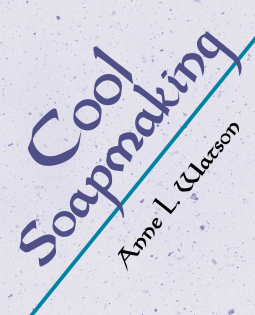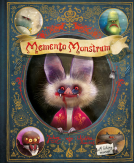
Cool Soapmaking
The Smart and Simple Guide to Low-Temp Tricks for Making Soap with Milk, Citrus, Cucumber, Pine Tar, Beer, Wine, and Other Special Ingredients
by Anne L. Watson
This title was previously available on NetGalley and is now archived.
Send NetGalley books directly to your Kindle or Kindle app
1
To read on a Kindle or Kindle app, please add kindle@netgalley.com as an approved email address to receive files in your Amazon account. Click here for step-by-step instructions.
2
Also find your Kindle email address within your Amazon account, and enter it here.
Pub Date Feb 01 2016 | Archive Date Jun 10 2016
Description
Soapmakers may love to add a variety of materials to soap, but they find that some cause more trouble than others. In the heat of the chemical reaction, an ingredient might discolor, or lose its scent, or develop a bad smell. Or it might cause problems during soapmaking, giving off noxious fumes, or making the soap harden so fast that there's no time to pour it in the mold.
Help has arrived.
Anne L. Watson extends the low-temp techniques from her book "Milk Soapmaking" to making soap from a variety of special ingredients, including cucumber, citrus, pine tar, beer, and wine. Soaps that have long challenged home soapmakers will now pose no problem at all.
/////////////////////////////////////////////////
Anne L. Watson is the author of the wildly popular and widely acclaimed beginners book "Smart Soapmaking" and its companions, "Milk Soapmaking" and "Smart Lotionmaking." She has made soap professionally under the company name Soap Tree, and before her retirement was a historic preservation architecture consultant. Anne's other published books include "Baking with Cookie Molds" and several novels. Anne, her husband, Aaron, and their cat, Skeeter, live in Friday Harbor, Washington.
/////////////////////////////////////////////////
CONTENTS
GETTING STARTED
(From High-Temp Soapmaking to Low)
WHAT DO I PUT INTO IT?
(The Ingredients of Cool Soapmaking)
WHAT DO I USE TO MAKE IT?
(Gathering the Equipment You Need)
PROJECT #1: MILK SOAPS
Recipe: Anne's Cool Milk Soap
COOL SOAPMAKING STEP-BY-STEP
(From Prep to Cleanup and Beyond)
PROJECT #2: CUCUMBER SOAPS
Recipe: Basic Cucumber Soap
Recipe: Cucumber Yogurt Soap
Recipe: Cucumber Green Clay Soap
Recipe: Cucumber Apricot Soap
Recipe: Cucumber Avocado Soap
Sidebar: Designing Cucumber Soaps
PROJECT #3: CITRUS SOAPS
Recipe: Basic Citrus Soap
Recipe: Orange Yogurt Soap
Recipe: Citrus Honey Soap
Recipe: Ruby Red Grapefruit Soap
Sidebar: Designing Citrus Soaps
PROJECT #4: SOAPS WITH ACCELERANTS
Recipe: Sweet Bay Soap
Recipe: Pine Tar Soap
Sidebar: Designing Soaps with Accelerants
PROJECT #5: BEER and WINE SOAPS
Recipe: Basic Beer Soap
Recipe: Chocolate Ale Soap
Recipe: Red Wine Soap
Recipe: White Wine Soap
Recipe: Anne's Coconut Beer Soap
Sidebar: Designing Beer and Wine Soaps
WHY? WHY? WHY?
(Frequently Asked Questions)
WHERE TO FIND MORE
/////////////////////////////////////////////////
FROM THE INTRODUCTION:
From the beginning of soapmaking, people have made it "hot." In fact, professional soapmakers used to be called soap boilers and shared a patron saint with firefighters.
As far as I can tell, the kind of soapmaking now called hot process was the rule for both family and commercial soapmaking all the way up to around 1940. At that time, companies that manufactured lye began to market it for home soapmaking, which was falling out of fashion. The new method came to be known as cold process -- a term I've found from as early as that same period, in a lye company pamphlet.
Though in cold process the soap mixture isn't "cooked," it isn't really cold either, as its temperature usually falls somewhere between room temperature and 110 degrees F (43 degrees C). Still, cold process seemed simpler, possibly safer, and was less intimidating to beginners. So, as craft soapmaking became popular, cold process was the technique favored in many books.
More recently, soapmakers adding milk to their soaps have come up with a version of cold process that truly does involve lower temperatures. In my book "Milk Soapmaking," I called it Cool Technique. It uses frozen liquid to counteract the heat generated by the dissolving lye. This aims to keep the milk as cold as possible, to avoid browning the milk sugars and darkening the soap.
After writing that book, I continued to refine Cool Technique. But more important, I discovered that its usefulness goes far beyond milk soap. In fact, it can help wherever high temperatures cause problems of scorching, fumes, acceleration, or other unwanted reactions.
A Note From the Publisher
Available in paperback and on Kindle.
Available Editions
| EDITION | Paperback |
| ISBN | 9780938497677 |
| PRICE | $12.50 (USD) |
Links
Featured Reviews
 Pamela K, Bookseller
Pamela K, Bookseller
Really comprehensive with great instructions. It does assume a basic knowledge of soap making, but was still detailed enough that I would say a beginner could follow along. The reason that this didn't get a higher rating from me was that it's not very well designed. The cover is awful and it looks completely and cheaply self-published. From a bookseller's point of view I would really struggle to recommend it to people due to the way it looks. It looks spectacularly unprofessional.
 Montzalee W, Reviewer
Montzalee W, Reviewer
Cool Soapmaking by Anne L Watson is a soapmaking book for the soapmaker that wants to up their game. If you are a soapmaker and have had problems and need solutions or want to add a variety of ingredients that seem challenging, well this is your book. This writer walks you through everything from the lye to use, molds and why, timing, cutting, when to add scents and how much, and recipes for low-temp soap recipes. No more burning soap or fingers! This is filled with so many tips and tricks that I can't wait to try them out! She makes it so simple, thanks so much Anne! The book is well organized with a list for all the things you will need to make your soaps, step by step guides, special tips/tricks on each, recipes, and she has a wide variety of ingredients she discusses. Wonderful details. I received this book for a honest review from NetGalley and it in no way effected my review or rating. Great Job!!!
 Kristin C, Reviewer
Kristin C, Reviewer
This book is for those that already have a basic knowledge of different soap making techniques the author has developed a "cool process" that creates a home variation for those looking to advance your l soap making options.
 Beccy S, Reviewer
Beccy S, Reviewer
Fabulous little book for the almost novice, if you've never attempted soap making before, Anne does recommend reading one of her earlier books first.To me, cool soap making looks a whole lot safer that the hot method, and using Anne's methods, the novice can learn how to make luxurious soaps. I'm going to try the beer and coconut recipe
Love that Anne is happy to help with any problems or questions via her website
 janet k, Librarian
janet k, Librarian
Ms. Watson's books are the kind everyone who wishes to make their own soap should use as reference. Cool Soapmaking is book 5 in the series and it follows well in technique and experience level. Ms. Watson writes knowledgeably and conversationally. Though the recipes and directions may be basic, they are not condescending or lecture like. I really appreciated that it can be used by novice and experienced soap makers.
*I received my copy through NetGalley.com in exchange for an honest review.
Readers who liked this book also liked:
Jochen Till
Children's Fiction, Comics, Graphic Novels, Manga, Sci Fi & Fantasy






